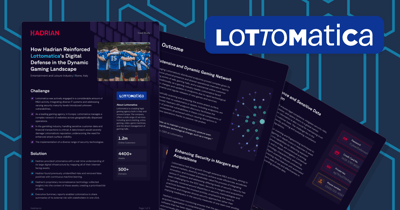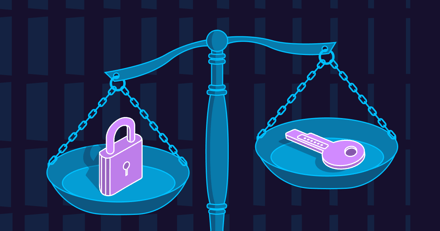Research | 3 mins
Overcoming Security Challenges with Automated Vulnerability Validation

35% of security leaders report inadequate visibility into their organization’s assets, while nearly one-third grapple with alert fatigue and staffing shortages. These challenges not only leave critical vulnerabilities undetected but also push security teams into a constant cycle of reaction, overwhelmed by false positives and unprioritized risks.
For cybersecurity teams facing these pressures, External Attack Surface Management (EASM) offers a breakthrough: automating vulnerability validation to cut through noise, streamline workflows, and help teams focus on genuine threats. By automating validation processes, organizations can drastically reduce noise, improve focus on critical threats, and optimize resource allocation.
Lack of Visibility
Visibility into digital assets and vulnerabilities is foundational to effective cybersecurity. Yet many organizations struggle with it, often due to outdated tools and siloed workflows. Incomplete asset inventories and limited scanning capabilities leave large portions of attack surfaces unmonitored. This lack of visibility exposes companies to undetected vulnerabilities and leaves them vulnerable to threats, including software supply chain attacks.
EASM platforms address these issues by automatically scanning and continuously monitoring an organization’s entire digital footprint. This proactive approach increases the visibility of assets, such as open ports, DNS misconfigurations, and unpatched technologies. By using AI-driven prioritization, EASM ensures that high-risk vulnerabilities receive immediate attention, allowing teams to shift from a reactive to a proactive stance in security management.
Human Resource Constraints
The cybersecurity talent shortage is a widely recognized problem. Security teams face the growing challenge of balancing more tasks with fewer resources as the threat landscape transforms rapidly. This shortage affects everything from threat detection and response to patch management, leading to increased operational challenges and potential burnout.
By automating asset discovery, validation, and vulnerability assessment, EASM platforms help teams manage large attack surfaces without a proportional increase in human resources. Automation reduces the manual labor required, enabling security teams to focus on more complex, high-priority tasks. For example, EASM can cut down mean time to remediate (MTTR) by as much as 80%, thanks to its streamlined workflows and step-by-step remediation recommendations.
Alert Fatigue and False Positives
Alert fatigue is a pervasive issue in security operations. Security tools often produce a high volume of alerts, many of which are false positives. SOC analysts face an overwhelming "haystack" of notifications, which dilutes the focus on genuine threats and contributes to burnout. Studies show that up to 90% of these alerts can be low-priority events, making proactive monitoring ineffective and desensitizing teams to real threats.
Automated validation within EASM reduces alert fatigue by minimizing false positives. With advanced filtering, EASM platforms deliver actionable alerts based on severity and context. This helps SOC analysts distinguish true threats from the noise, ensuring they can focus on incidents that genuinely need attention. The result? Increased productivity, streamlined incident management, and more efficient resource allocation.
How EASM Helps: Enhancing Productivity and Reducing MTTR
EASM solutions offer a range of tools that boost productivity and reduce MTTR:
-
Automated Validation: By validating vulnerabilities automatically, EASM reduces the number of alerts that require human intervention, ensuring teams aren't bogged down by low-priority notifications.
-
Asset Inventory Management: EASM continuously discovers and monitors assets, giving security teams a comprehensive and real-time view of their attack surface. This increased visibility enables faster and more accurate threat detection.
-
Real-Time Threat Intelligence: Integrated threat intelligence helps EASM platforms contextualize vulnerabilities in real time, enabling faster, more informed responses.
-
Prioritization Based on Asset Criticality: Sophisticated AI within EASM prioritizes vulnerabilities based on factors like asset criticality and threat severity, focusing teams on the most pressing issues and reducing wasted efforts.
The trio of visibility gaps, resource shortages, and alert fatigue creates significant vulnerabilities. By automating and optimizing vulnerability management through EASM, organizations can address these challenges head-on. With improved visibility, more efficient use of resources, and reduced alert noise, EASM empowers security teams to manage vulnerabilities effectively and proactively. This leads to stronger defenses, lower costs, and a more scalable approach to cybersecurity.
To dive deeper into how EASM can transform your security approach and help you stay ahead of evolving threats, download the Frost & Sullivan whitepaper "Beyond the Perimeter: Implementing Proactive Security with External Attack Surface Management" for a comprehensive look at these critical insights.






